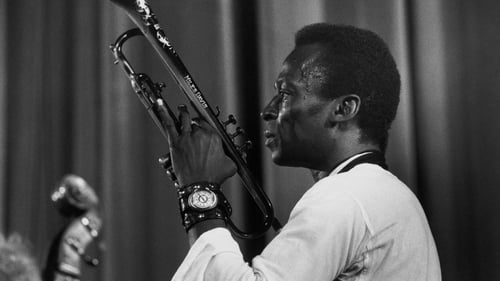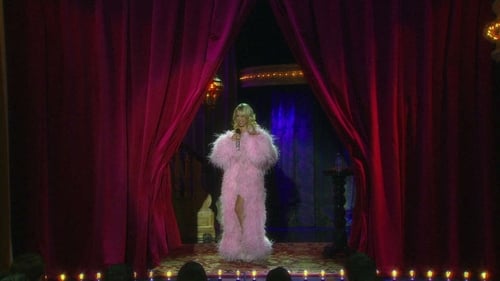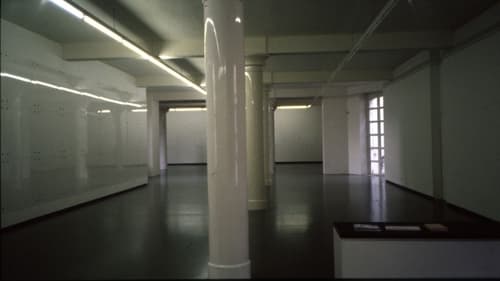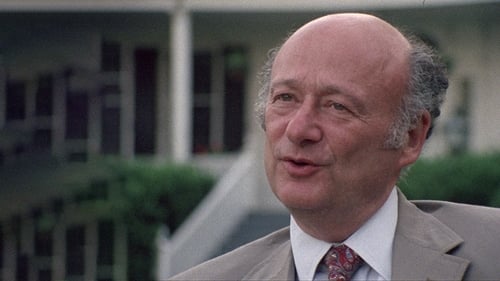
Director of Photography
마일즈 데이비스를 수식하는 단어는 무궁무진하다. 트럼펫 연주자, 밴드 리더, 혁신가, 고상한, 허영심 많은, 지식인, 훌륭한, 변덕스러운, 천재, ‘멋짐‘의 화신, 심장을 아프게 만들 정도로 아름다운 소리를 낼 줄 아는 음악인. 지금까지 공개된 적 없는 영상과 편집됐던 녹음 파일, 보기 드문 사진을 담은 이 영화는 독보적인 재능을 가진 한 남자의 트럼펫 뒤의 삶을 그린다.

Camera Operator
Documentary with several of director Robert Altman's longtime collaborators, as they discuss making the film McCabe & Mrs. Miller (1971), the style and themes of the story and working with Altman.

Director of Photography
Greg Lynn, one of the leading figures in computer-aided architectural design, visits the first in a series of exhibitions initiated by the Canadian Centre for Architecture for which he is the curator. The exhibitions, which will travel to the Yale School of Architecture Gallery, are meant to explore the role of digital technologies in the design process since its beginnings. The first exhibition, entitled "Archaeology of the Digital", features four individuals who are pioneers in applying new technologies to architectural design: Peter Eisenman, Frank Gehry, Chuck Hoberman, and Shoei Yoh. At the exhibition Lynn is joined by three of the four practitioners: Eisenman, Gehry and Hoberman, who each explain their path to the digital at the time.

Director of Photography
In an effort to work without the distractions of the city, artist Carroll Dunham moved his studio from Manhattan to a small village in Connecticut, not far from where he grew up. Finding himself to be more at peace in the calm, rural setting, Dunham feels the freedom to create wildly bold and visually stimulating work, painting his way through expression and sexuality. Continuously holding a mirror up to society, Dunham aims to examine the ways in which we interpret images and ideas surrounding the physical human form and our contrived notions of appropriate depictions of it through art and media. Dunham's large canvas works are flooded with vivid color and striking imagery that grabs the attention of its audience and encourages a reconsideration of form and gaze. "The Artist's Studio: Carroll Dunham" documents a visit with critic Roberta Smith as she observes his new captivating work: a series entitled "In the Flowers" and a large canvas "The Beach".

Additional Camera
Renowned American porn star Katie Morgan traveled to New York to meet her fans, answer their questions and more.

Director of Photography
Filmed during a rehearsal and performance of Beethoven's Quartet in B Flat Major, Opus 130, "The Juilliard String Quartet: Keeping Beethoven Contemporary" is an exciting portrait that explores the creation and history of the famed Quartet, offering a glimpse inside the world of its four current members. Founded in 1946 by Juilliard School president William Schuman and violinist Robert Mann, with the intent of pursuing the brilliant musicianship of the classical genre, the Quartet continued well beyond its original membership, bringing the music along into a new era. Opening up their dialogue to us, the members of the Quartet, Joseph Lin, Joel Krosnick, Ronald Copes and Samuel Rhodes, speak in detail about the string quartet as a musical genre, its vibrant history, and the significant contributions of Beethoven

Director of Photography
Critic Kenneth Frampton is a masterful commentator on the architecture of our time. At the start of his long-spanning career Frampton worked as an architect in London before settling into his writing and teaching, which mainly took place at Columbia University. Over the past fifty years Frampton has certified himself as a prolific and influential contributor towards a progressive interpretation of the role of architecture in modern society. In "Kenneth Frampton: A Critical Voice", architect Stan Allen interviews the renowned critic and questions him about his architectural contemporaries, notable past projects, and published writings.

Director of Photography
Architects Lebbeus Woods and Steven Holl have been friends for many years, brought together by their creativity, philosophy and visionary architectural pursuits. While both are theorists, Woods finds himself preoccupied with bold, speculative designs that push back against notions of time and space, not waiting or searching for any kind of commissions but instead forming his own aesthetical world through the freedom of drawing. This approach stands in direct contrast with Holl's body of work, which consists of many physical buildings both in the United States and abroad. This known order between the two architects has recently been interrupted by Holl commissioning Woods to design a four-story pavilion for his large-scale multi complex Sliced Porosity Block in Chengdu, China. Getting together at Woods' workspace in downtown Manhattan, the longtime friends recall their careers while discussing the current project and their mutual architectural practices.

Director of Photography
"Marking Infinity", Lee Ufan's recent retrospective exhibition at the Guggenheim charts the artist's creation of a visual, conceptual, and theoretical language that has radically expanded the possibilities for sculpture and painting over the past forty years. Deeply versed in modern philosophy, Lee is also an influential writer and is recognized as the key theorist of Mono-ha, an anti-formalist, materials-based art movement that developed in Tokyo in the late 1960s. Active internationally over the last four decades, Lee is acclaimed for an innovative body of Post-Minimalist work that promotes process and the experiential engagement of viewer and site.

Camera Operator
CHE was the first feature to use the Red camera, which Soderbergh embraced for its versatility and image quality. This short 2009 documentary looks at the evolution of the camera during the film’s production and at the many ways it has enhanced and altered the process of modern digital filmmaking.

Director of Photography
A journey inside the world of a legend of modern art and an icon of feminism. Onscreen, the nonagenarian Louise Bourgeois is magnetic, mercurial and emotionally raw-an uncompromising artist whose life and work are imbued with her ongoing obsession with the mysteries of childhood. Her process is on full display in this intimate documentary, which features the artist in her studio and with her installations, shedding light on her intentions and inspirations. Louise Bourgeois has for six decades been at the forefront of successive new developments, but always on her own powerfully inventive and disquieting terms. In 1982, at the age of 71, she became the first woman to be honored with a major retrospective at New York's Museum of Modern Art. In the decades since, she has created her most powerful and persuasive work, including her series of massive spider structures that have been installed around the world.

Additional Camera
Adult-film star Katie Morgan leads a candid, and naked, virtual journey through the history of sex toys, from stone age toys to the latest modern devices.

Director of Photography
Jeff Wall is one of the most important and influential photographers working today. His work played a key role in establishing photography as a contemporary art form.

Director of Photography
A retrospective look at the career of Paul Robeson and his legacy as both an American and a citizen of the world.

Camera Operator
A documentary on the career of William Greaves, featuring Greaves, his wife and co-producer Louise Archambault, actor Ruby Dee, filmmaker St. Clair Bourne, and film scholar Scott MacDonald. Released within Criterion's Symbiopsychotaxiplasm set.

Director of Photography
For the third time, HBO cameras go inside Trenton State Maximum Security Prison--and inside the mind of one of the most prolific killers in U.S. history--in this gripping documentary. Mafia hit man Richard Kuklinski freely admits to killing more than 100 people, but in this special, he speaks with top psychiatrist Dr. Park Dietz in an effort to face the truth about his condition. Filled with more never-before-revealed confessions, it's the most chillingly candid Iceman special yet as it combines often-confrontational interview footage between Kuklinski and Dietz with photos, crime reenactments and home movies that add new layers to this evolving and fascinating story.

Director of Photography
For his five Cremaster films Matthew Barney's created a multitude of sculptural forms and structures. Recently both the sculptures and the films traveled to museums in Cologne, Paris and New York's Guggenheim. In THE CREMASTER CYCLE: A Conversation with Matthew Barney, the artist guides the camera through this remarkable creation at the Guggenheim Museum while being questioned by Michael Kimmelman, chief art critic of the New York Times.

Director of Photography
Art historians and critics talk with Philip Guston about his ideas and new work of the 1970's. Filmed during the making of "Philip Guston: A Life Lived."

Director of Photography
"Sol LeWitt: 4 Decades" presents an opportunity to accompany one of the great artists of our time on a tour of his work, from his formative years to the present. Joined by curator Gary Garrels, LeWitt offers context and motive behind his 2000 retrospective exhibition at Chicago's Museum of Contemporary Art. A heavy emphasis is placed on LeWitt's spectacularly large scale wall drawings, for which he is best known. Garrels, who with LeWitt, spent three years on the creation of the exhibition, leads the artist through his breakthroughs of four decades, from the 1960s to the present.

Director of Photography
At the beginning of the twenty-first century, abstraction - that most quintessentially modernist innovation - maintains a peculiarly contradictory position. Used, on one hand, by post-modernist artists as just one more quotable style amongst many, it is on the other hand still considered an elitist or hermetic language by audiences intimidated by its lack of recognizable subject matter. Yet ultimately, abstraction continues to be a viable creative path for contemporary artists of all generations, many of whom embrace it as the most inclusive and fundamentally resonant of artistic languages. Filmed at the artists' studios, the Dia Center for the Arts, and the Guggenheim Museum during their exhibition, "Abstraction in the Twentieth Century."

Director of Photography
The history of color photography in motion pictures, in particular the Technicolor company's work.

Director of Photography
American composers have long struggled against the momentum of the Western European classical tradition and the prestige it has held in America's cultural life. "I did not want to have any stricture at all, I wanted to be completely free." So spoke Harry Partch, describing not only his own path, but also that of two other influential American composers: Lou Harrison and Terry Riley. They were attracted to musical ideas and sounds outside of the surrounding classical mainstream. Together they offer a deeper understanding of what those alternatives are and how they have affected American culture.

Cinematography
The Sensual Nature of Sound portrays four New York based composers and performers in terms of their musical lives and artistic passion. Though Laurie Anderson, Tania Leon, Meredith Monk and Pauline Oliveros are all pioneers in American music, each composer pursues a distinct direction of her own. Their rehearsals and performances show a common pursuit of lyrical storytelling through which a new set of contemporary narratives has been forged. Through body, sound, movement and composition, these women have forged their own path through the wild world of modern music.

Director of Photography
Since the 1960s, other disciplines, cultures, and artists previously excluded from modernism's privileged canons have become absorbed into an ever expanding field of activity and influence. Younger artists are a new breed of cultural scavengers, anything or anyone is fair game for appropriation or reinterpretation. Fascinated by notions of space, time and the human body, artists such as David Hammons, Laurie Simmons and Richard Wentworth have carved their own path through conceptual art.

Cinematography
A documentary focusing on seventeen maverick directors who were not afraid to break the rules of filmmaking to advance their art. Among the classic directors profiled are D.W. Griffith, Josef von Sternberg, Erich Von Stroheim, and Preston Sturges up until more current filmmakers like David Lynch, Robert Altman, and Martin Scorsese..

Director of Photography
Japan's establishment as an economic superpower led to a Golden Age of Japanese architecture. Six innovators stand out particularly, fusing Japanese traditions with modern materials and technology.

Director of Photography
This documentary by Michael Blackwood looks at the development and production of Glass' opera Akhnaten. The film follows two productions by the Württemberg State Theater, Stuttgart, and the Houston Grand Opera.

Director
The British architect based in Stockholm looks back on major projects of a long career inspired by European Modernism combined with his personal sensitivity to nature and community. Erskine is especially valued for his vital understanding of social interaction, exemplified in commissions for universities and housing complexes built from Scandinavia to Italy. The architect takes the camera on a tour of his buildings while offering revealing comments and interpretations.

Director of Photography
Guided by seasoned New Yorkers, political figures, and cultural connoisseurs, "Empire City" examines Manhattan and its surrounding boroughs in order to paint a portrait of the ever-evolving metropolis. Appearing to be both adaptable and stubbornly stagnant, New York is a city of juxtapositions. As our narrator notes, "The city is too big, too diverse, and too complex for anyone to comprehend. New York is many cities interlaced with one another, each in constant independent motion."

Director of Photography
Late in life, the artist looks back over a career that originated in social realism during the '30s, moved to the center of Abstract Expressionism, and culminated in a return to figuration. Filmed at his retrospective in San Francisco in 1980 and at his Woodstock studio, where Guston is seen painting, the artist speaks candidly about his philosophy of painting and the psychological motivation for his work.

Director of Photography
In 1943 Herbert and Lotte Strauss made the courageous decision to escape from Germany and almost certain extermination in a Nazi concentration camp. This is a personal account of their dramatic flight, building a new life in the United States, and coming to terms with the Holocaust. "We Were German Jews" grapples with the torment of living with the legacy of the Holocaust. The film chronicles Herbert and Lotte Strauss' return visit to Germany. They were not trying to assuage any sense of guilt over having survived; they wanted to confront the past by going back to where they had lived before the onslaught that claimed most of their relatives. This understated, very personal story adds significantly to the body of evidence that explores human behavior in the face of genocide and insists that we remember the past and learn from it.

Director of Photography
Made in 1980, this film explores the contemporary dance scene through the work of seven New York-based choreographers. They discuss the nature of dance and the evolution of their own work. Filmed at rehearsals, performances, and during interviews, the film is a unique primary source. The artistic roots of these seven artists can be found in Martha Graham's concern with modern life as a subject for dance and in Merce Cunningham's emphasis on the nature of movement. In the 1960s, the interaction of art forms generated choreographic innovations. Especially influential was John Cage, whose radical ideas served as a point of departure for much of the new choreography. Each of the choreographers in Making Dances draws inspiration from the Graham/Cunningham tradition, yet each makes a highly distinctive statement. Structure, movement in non-fictive time and space, and the nature of movement itself are recurring themes.































